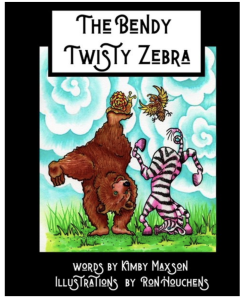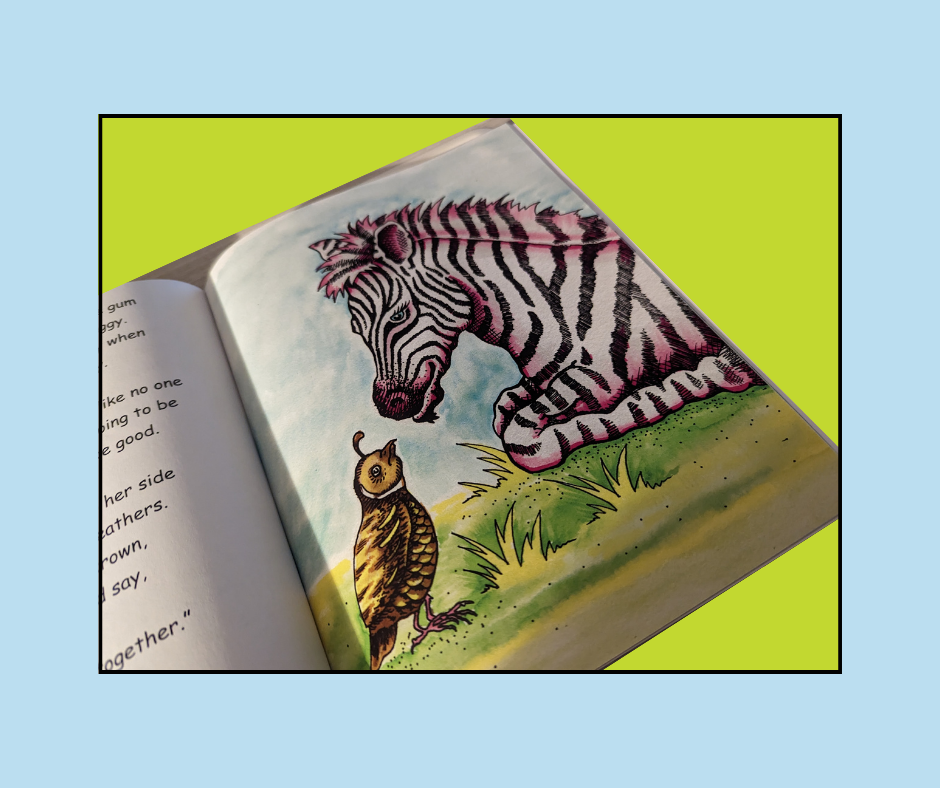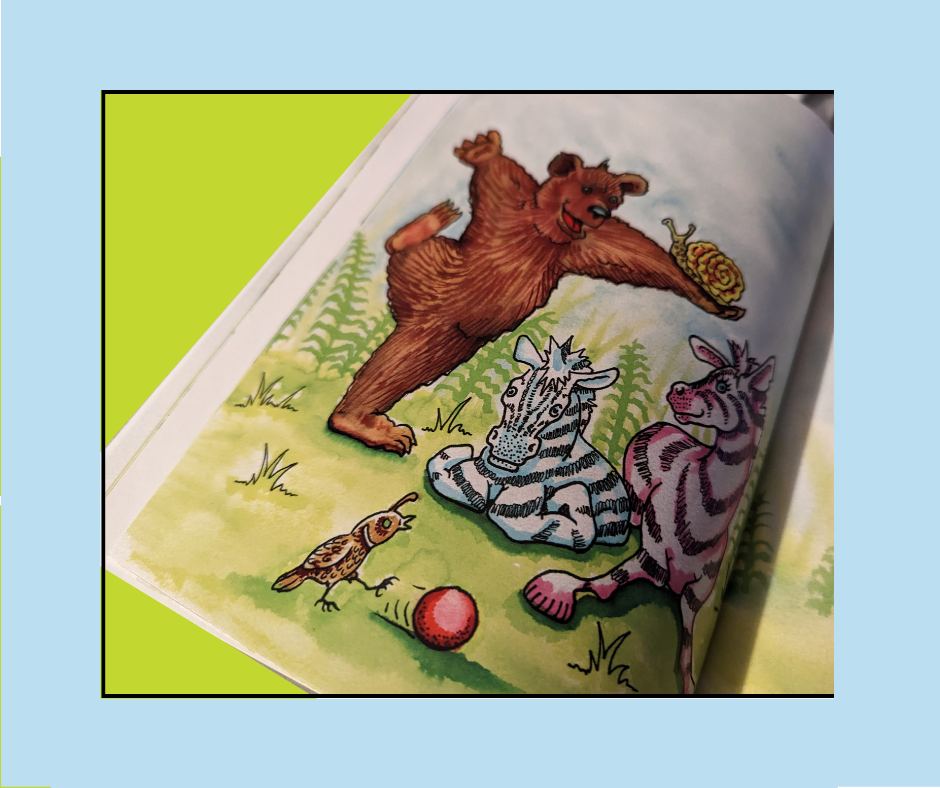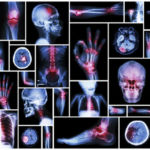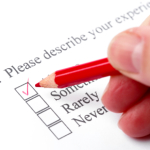Move over, Dr. Seuss! Make room on children’s bookshelves for The Bendy Twisty Zebra written by Kimby Maxson and illustration by Ron Houchens. With colorful characters, catchy rhymes, and a heart-felt message, The Bendy Twisty Zebra brings to mind some of Dr. Seuss’s famous books. While children of all ages (even grown-up children!) can enjoy this book, it was written with a special population in mind: young zebras of all stripes who need a beautiful reminder that it’s okay to be different and that we’re never alone as we wrestle with our hardships.
The main character, Rose, is a young zebra with EDS. The symptoms will seem familiar–crooked teeth, unsteady gait, impaired proprioception that can be mistaken as clumsiness, pains and aches in various joints. All of this is explained in fun rhyme and language children will understand–not the medical jargon most of us adults use.
Rose and her group of loyal friends–Bear, Quail, and Snail–notice another zebra playing at school. He, too, has a difficult time with physical activity and laments about his various symptoms. Rose reassures him that it will be okay–we’re all different, but we all do a lot better when we go at it together.
“This book is something I wish we would have had when [my daughter] was young,” Kimby explains in an introduction to the book. She writes about her journey getting a diagnosis for her daughter and explains why it can be so difficult for parents and their children to undertake this medical maze: “The list of symptoms is long, often seemingly unrelated and can be very confusing…[The symptoms] may change day to day or come and go entirely. No two zebras are the same.” In addition to Kimby and her daughter’s story of finding an EDS diagnosis for her daughter, she includes a forword providing basic information about what EDS is, the symptoms associated with it, and why the zebra is used as the mascot for rare diseases.
- Book page in The Bendy Twisty Zebra
- Another beautiful illustration in The Bendy Twisty Zebra
While many patients with the Ehlers-Danlos Syndromes don’t get diagnosed until well into adulthood, more visibility and understanding of the condition is moving that diagnosis to younger ages. Patients with EDS who choose to have children are also likely to seek a diagnosis earlier in a child’s life. But how do you explain this complex connective tissue condition to a child, and, perhaps even more importantly, how do you help them cope with the feelings of being different from their peers?
According to Ehlers-Danlos Support UK, It’s important to balance the physical needs of a child with EDS with their mental and emotional needs. Accommodations, such as adaptive writing utensils, close consideration of activities in physical education classes, or a desk with a detached chair, may make a child feel different during a time when forming and being a part of friend groups is an important part of development. The key is balance, and, when appropriate, allowing the child to help make decisions in regards to accommodations, both in and outside of school.
Also, consider the impact on a child’s quality of life. While elbow and knee pads may reduce a bruise or a bump here and there while playing on the playground, having to wear them throughout the school day may cause struggles with extra warmth, chaffing and other skin irritation from the pads, and the looks, whispers, and points from other children. Perhaps conversations with the child about safe activities and how to handle injuries if they occur would be a better option. It’s up to the individual parents, teachers, and other school staff to decide what makes the most sense given the environment and resources available.
It’s inevitable that something will make a child with EDS feel different, whether that’s a physical manifestation of the condition, a piece of necessary medical equipment, missing school due to appointments and flare-ups, or a number of other things. The Bendy Twisty Zebra offers a jumping off point to talk to children about feeling different or isolated, how they can express and manage those emotions, and how to help others who may seem alone or scared.
The Bendy Twisty Zebra is available for purchase at Amazon, Wal-mart, and other small bookshops*. When you pick up a copy for the zebra(s) in your life, consider donating a copy to your local public library or elementary school library so as many little zebras as possible can read this book and find their strength and place to belong, no matter what noises their joints make.
*Please note: Chronic Pain Partners does not receive any money in exchange for providing links to places to buy this book. We just really like it–and think you will too!
by Kate Schultz
March 2023
